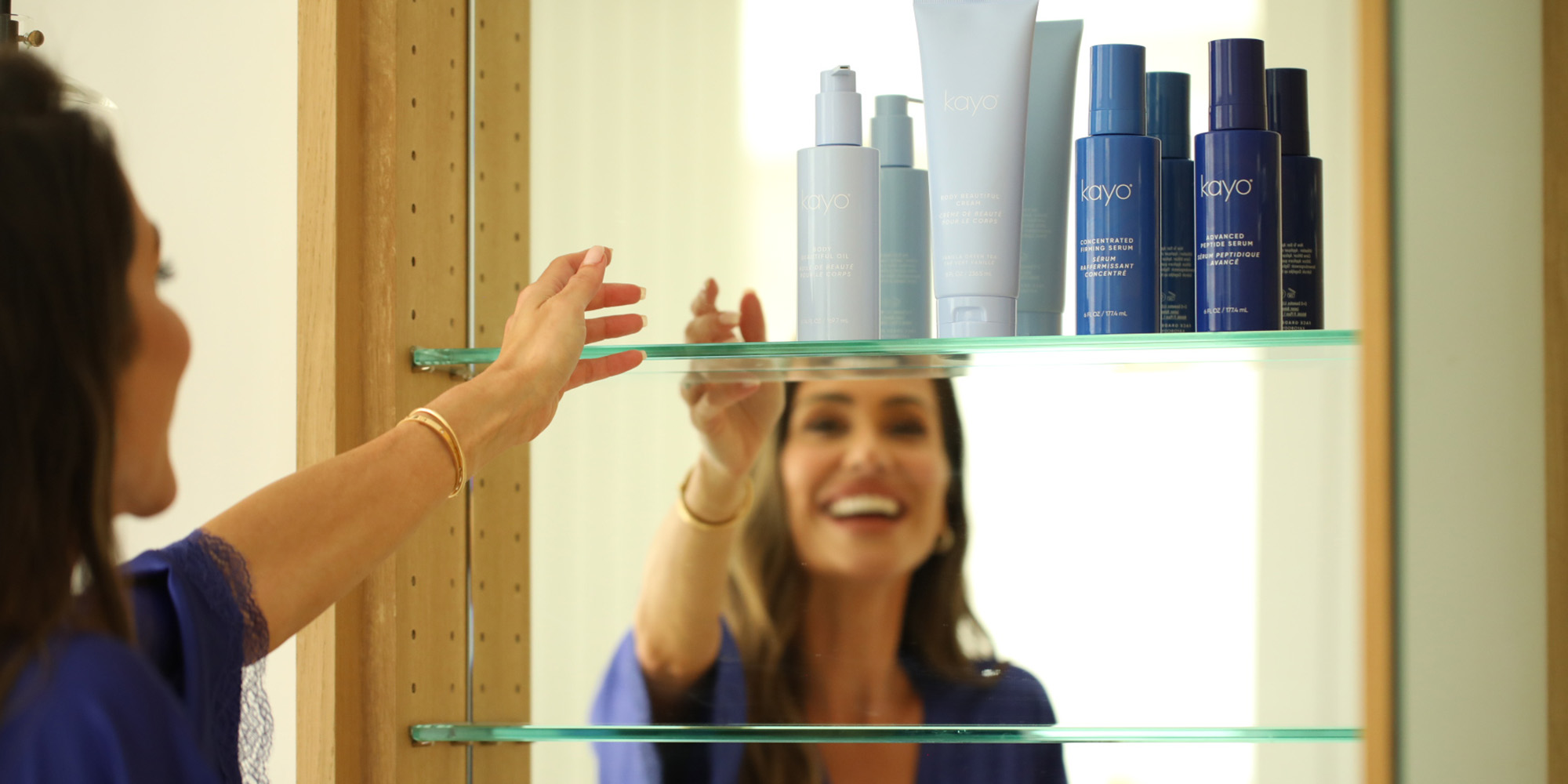
Kayo’s Christine Bullock On How Tough It Is For A Small Brand Up Against Competitors With Big Marketing Budgets
A longtime fitness authority, Christine Bullock realized over a decade ago that her clients, who were spending thousands on exercise and nutrition programs to improve and maintain their bodies, would pay a premium for beauty products that offered the equivalent for the skin on those bodies.
With former business partner Carrington Snyder, she launched Kayo, a brand that trademarked the phrase “face grade body care,” in 2016 to match the quality of body care to the quality of face skincare. It started with five products—Concentrated Firming Serum, Daily Remodeling Serum, Body Beautiful Oil, Body Beautiful Crème and Vitamin Boost—priced from $46 to $68 and eventually reached roughly 15, including supplements and CBD products in a short-lived foray into the cannabis field. At one point, the brand was sold at Violet Grey, Dermstore, HSN, Net-a-Porter, Revolve, Harrods and other outlets.
“We were the first in the industry to really copy a face cream and put it in six ounces to eight ounces to allow you to put it all over your body, and we were the first with body serums,” says Bullock. “I was really excited to be able to find a hole in an already overloaded industry and fill it. In business, it’s ideal to find something like that for consumers, and so many times in my life I’ve been the first. In fitness, I was doing quick 20-minute at-home workouts before they were trending. I had to drag people along, and now they’re mainstream. The same thing happened with Kayo.”
Certainly, with the popularity of elevated body care rising, there’s no need today to drag people into believing that the category has legs (and necks, stomachs, arms, etc.). The downside for Kayo was that the rush of brands into body care—think Nécessaire, Saltair, Sol de Janeiro, Soft Services, Tronque and Gente—meant the marketing budget required to succeed skyrocketed.
Knowing that Kayo didn’t have the money to duke it out in marketing with much bigger players, Bullock chose to close the brand last month. She has no regrets about the choice and is taking the lessons she learned from Kayo to inform her upcoming venture, a brand in the health energy arena launching later this year. In case it’s helpful for her fellow entrepreneurs, she shared 10 of those lessons with Beauty Independent.
1. You Need More Money Than You Think For Marketing, Marketing, Marketing
In 2020 to 2021, Kayo raised roughly $600,000 in angel investment, and Bullock says, “We put in millions over the years with self-funding.” Yet, the brand’s marketing budget was essentially nonexistent. Bullock recounts, “We were always putting money back into the company to fill product for the retailers. We never got the opportunity to really hit it hard with influencers and ambassadors. Where the market grew over the past eight years, we would have to take on three times as much money to be able to compete.”
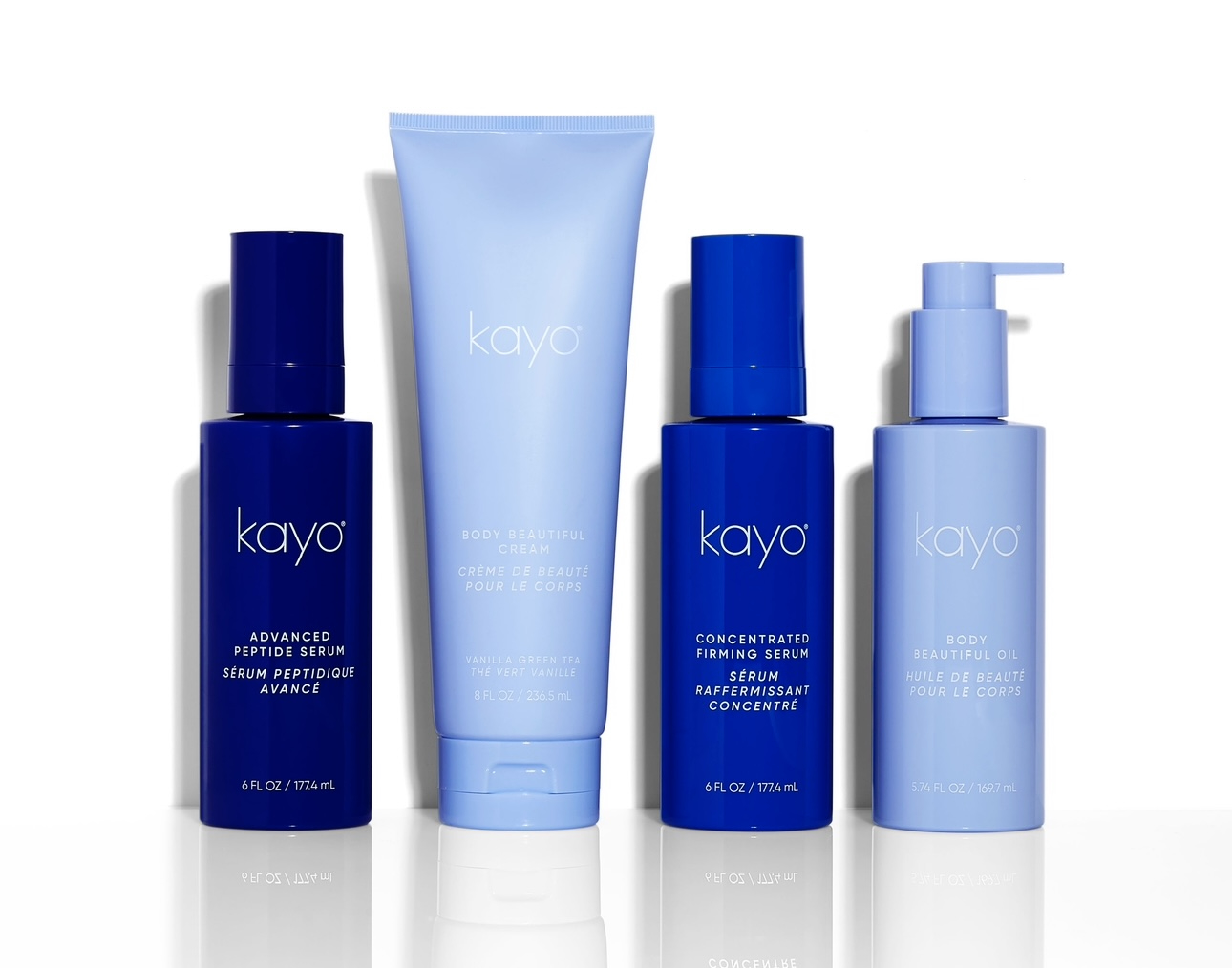
2. Good Product Is Insufficient
Bullock discloses that 70% of Kayo’s customers repurchased its products. “We created a high-quality product, but we couldn’t get it into new people’s hands as quickly as we should’ve,” she says. “There are all these big incubator brands with celebrity faces, and they are blowing up because these people have millions of followers. I don’t think there’s anything wrong with that, but they have whole teams to help them…and a lot of these brands just don’t have the quality anymore. They are churn and burn, and they hit it hard with marketing. We didn’t know how to expand our marketing.”
3. Determine Funding For The Brand You Want
“What I learned is, if your goal is to stay small, you can stay small and just keep going with smaller retailers, but, if your goal is to grow big—I always wanted a bigger brand, and we did grow fast quickly—you really need to take funding right away,” says Bullock. “You need to have big investors and somebody who has experience in the areas you don’t have experience. For us, that was marketing.”
The next step for Kayo was to enter large retailers, but it couldn’t swing the inventory quantities and marketing to propel sell-through. Bullock says, “We had huge retailers asking for us, but I knew that, if we couldn’t afford the marketing, there was no point in going in there.”
4. Never Depend On Trademark Protection
“People were stealing our trademark left and right,” says Bullock. “If they are marketing the heck out of it, it becomes theirs no matter if you are filing a lawsuit or not. If you are the first person with money to say something, you’re going to be known for it.” She elaborates, “People would take the description that’s our trademark. They didn’t realize it, so we sent them cease and desists, but you could see how fast it would trend for them.”
5. International Expansion Isn’t Profitable
“I felt like our brand was great for the international market because the international market is a little less about trends and a little bit more about quality, but, in international distribution, you lose so much money,” says Bullock. “We should not have done that. We thought of it in a sense as a marketing cost because we were growing the knowledge of the brand, and they were helping to market us, but we could have taken that money, grown in the United States and put it into marketing.”
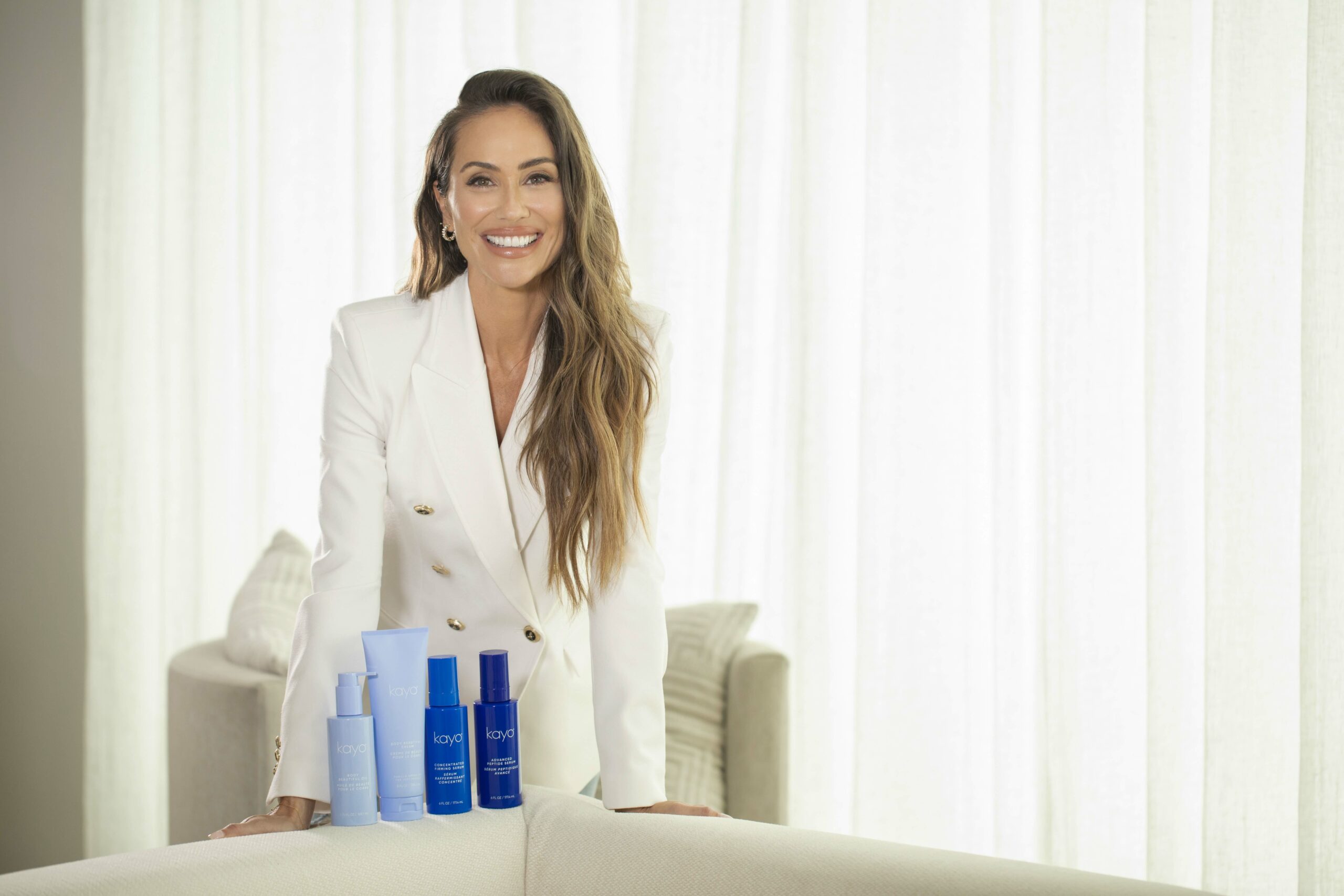
6. Retailers Can’t Be Your Main Marketing Vehicles
From 2016 to 2018, Bullock recalls that “the retailers in fact did help to market us, but when they took that really big hit in 2020, everything changed for them. They were all just trying to survive. They were trying to offload product and make sure the brands that they had were successful. They just stopped doing any marketing whatsoever.”
7. You Have To Be Your Biggest Advocate With Distribution Partners
As she glances ahead at the health energy brand she’s launching, Bullock is adamant about having buttoned-up marketing and retail strategies. She expounds, “I want to come out trending and disrupt the industry with the product, which I did with Kayo, but then have a marketing plan about who we are marketing to directly and how we are going to get into their hands. Also, with the retailers, it’s about not allowing them to control what they want from us, but having a say in that: Put us here on the endcap instead of in the back, and negotiating with them saying this is what I want instead of letting everyone else control the situation just because you are happy to be in a retailer.”
8. Body Care Is Getting Overrun
Bullock’s opinion is that the body care category has gotten packed with souped-up body lotions and serums. Rather than in the topical product arena, she spots room in body care for tools like red-light devices for the body intended for home use, and she continues to be convinced that supplements will be body care sales drivers. Kayo’s supplements were strong performers.
9. Trust Your Leadership
Although Bullock praises Kayo’s director of operations and customer Renee McCullough for providing amazing support to the brand, she laments never having assembling “a full great team” and trusted herself to guide it. Kayo had as many as 10 to 12 outsourced contractors.
“Honestly, we had too many people when we were the most staffed,” says Bullock. “I really should have stepped up and felt confident in myself. Having not managed a company like this before, I hired experts in their areas. I allowed other people who had more experience in the industry tell me what to do, and they weren’t always great decisions.”
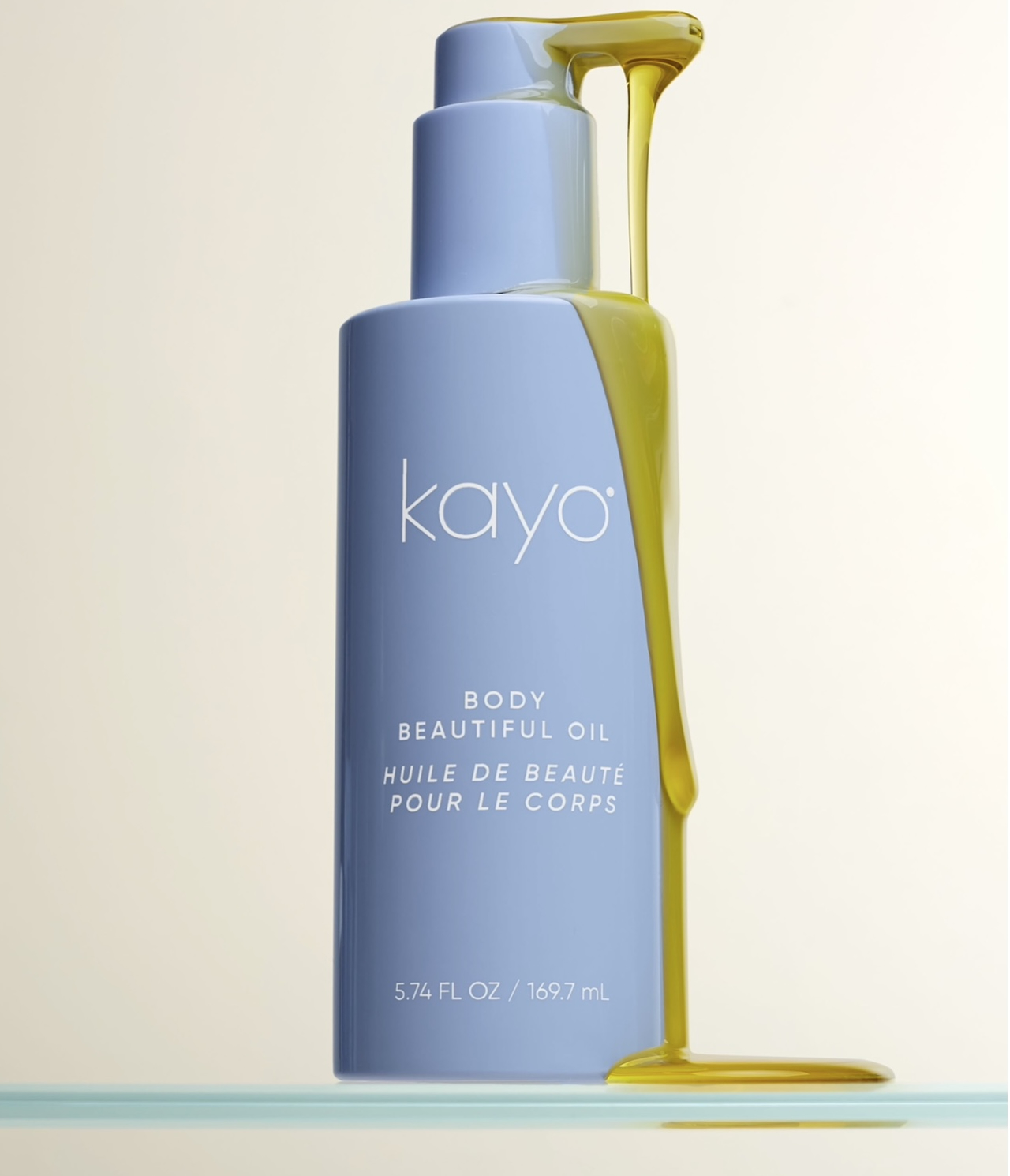
10. Don’t Get Down On Yourself For Moving On
Surprising herself, Bullock isn’t a bit sad about closing Kayo. “Sometimes we can be down on ourselves because we feel that we didn’t do the right things, but I feel like I did the right things at the moment. I’m proud of myself for launching a global trend,” she says. “For women starting a business when we don’t have all the experience in every situation, we are like, this other person should do it, but I know now I can do it on my own. It just took too much money, and there’s so much going on in the industry. I want to do this again, and I want to do this better.”

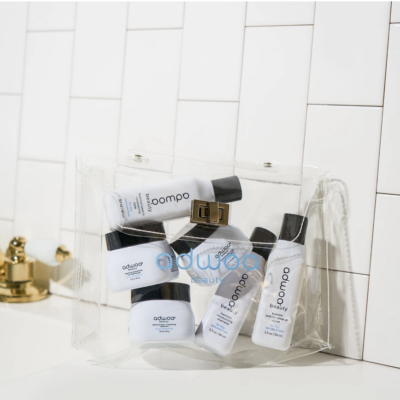



Leave a Reply
You must be logged in to post a comment.